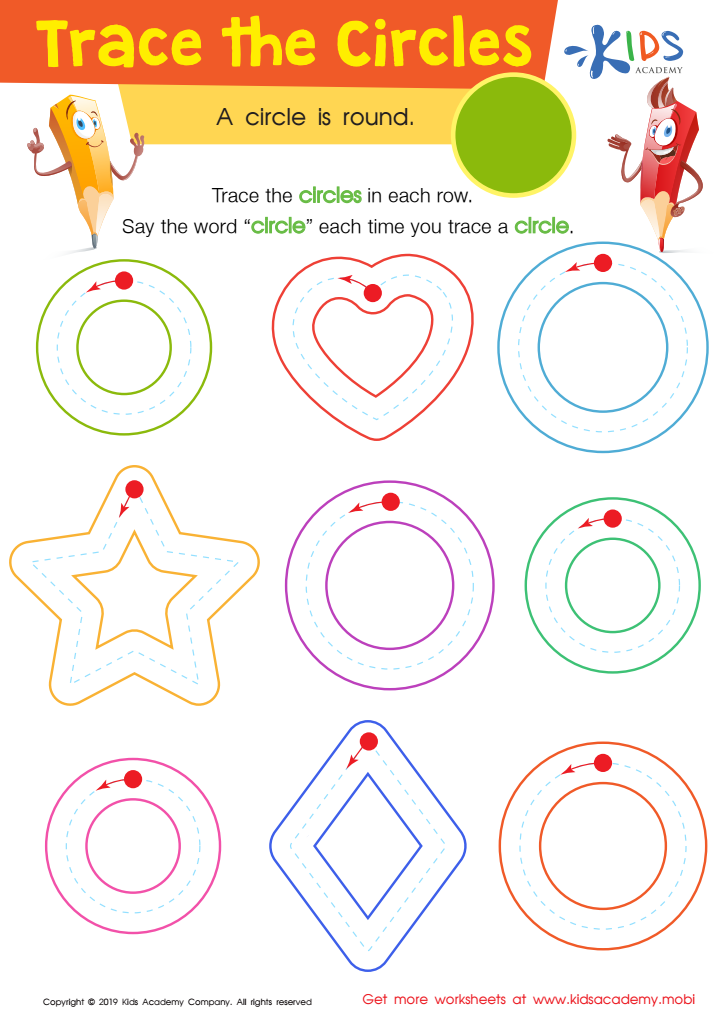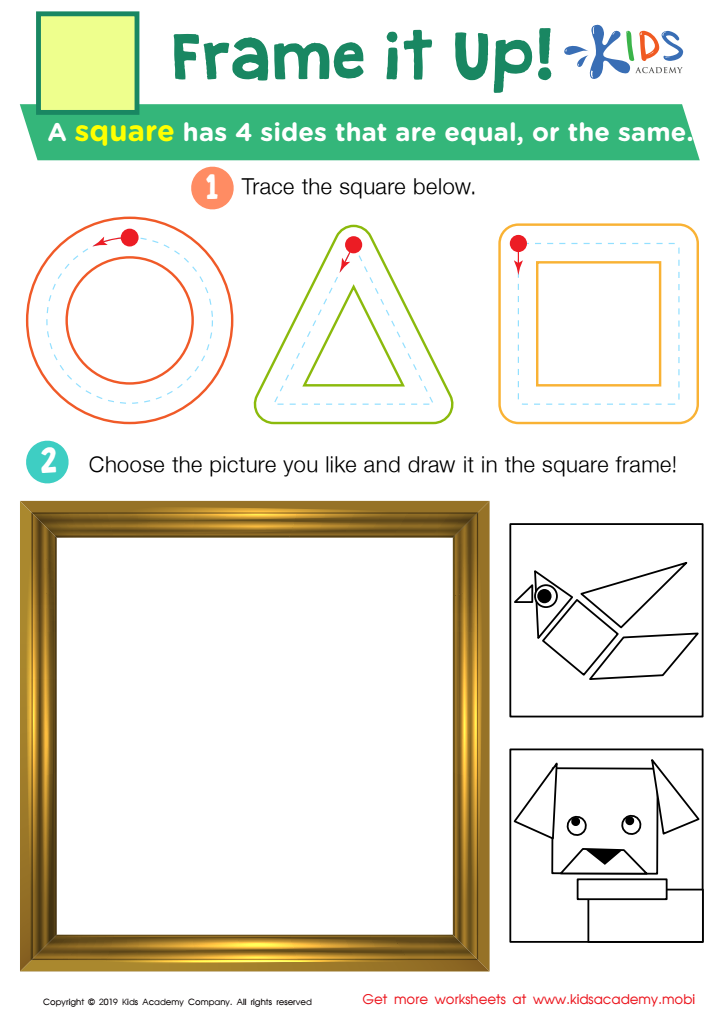Tracing Shapes worksheets activities for 9-Year-Olds
2 filtered results
-
From - To


Trace The Circles Worksheet


Frame it Up Worksheet
Tracing Shapes worksheets activities are an essential tool in the early developmental stages of children’s education. These activities provide a foundation not only for handwriting skills but also for recognizing and understanding geometric shapes, which are key elements in early math learning. Engaging with Tracing Shapes worksheets activities offers several benefits that contribute significantly to a child's cognitive, motor, and perceptual development.
Firstly, Tracing Shapes worksheets activities improve fine motor skills. Fine motor skills involve the coordination of small muscles in movements—usually involving the synchronization of hands and fingers—with the eyes. The precise movements required in tracing shapes help in strengthening muscle control in the hands and fingers, preparing children for more complex tasks such as writing.
Secondly, these activities enhance cognitive development. As children identify and trace different shapes, they begin to understand the concept of spatial awareness, size, and geometry. This early exposure to math concepts through simple and engaging Tracing Shapes worksheets activities lays the groundwork for more complex mathematical thinking and problem-solving skills in the future.
Moreover, Tracing Shapes worksheets activities also aid in improving hand-eye coordination. The act of visually tracking the line they need to follow with their pencil requires children to use their visual perception skills to guide their hand movements accurately. This skill is crucial not only in academic settings but in daily life activities as well.
Additionally, engaging in Tracing Shapes worksheets activities boosts a child’s confidence. Completing these worksheets provides a sense of achievement and encourages them to take on more challenging tasks. This positive reinforcement helps foster a love for learning and exploration.
In conclusion, Tracing Shapes worksheets activities are a valuable educational tool. They not only support the development of essential motor and cognitive skills but also play a significant role in building a child's confidence and foundational understanding of mathematical concepts. These activities, therefore, are not just about tracing lines but are a stepping stone towards holistic development.
 Assign to the classroom
Assign to the classroom












